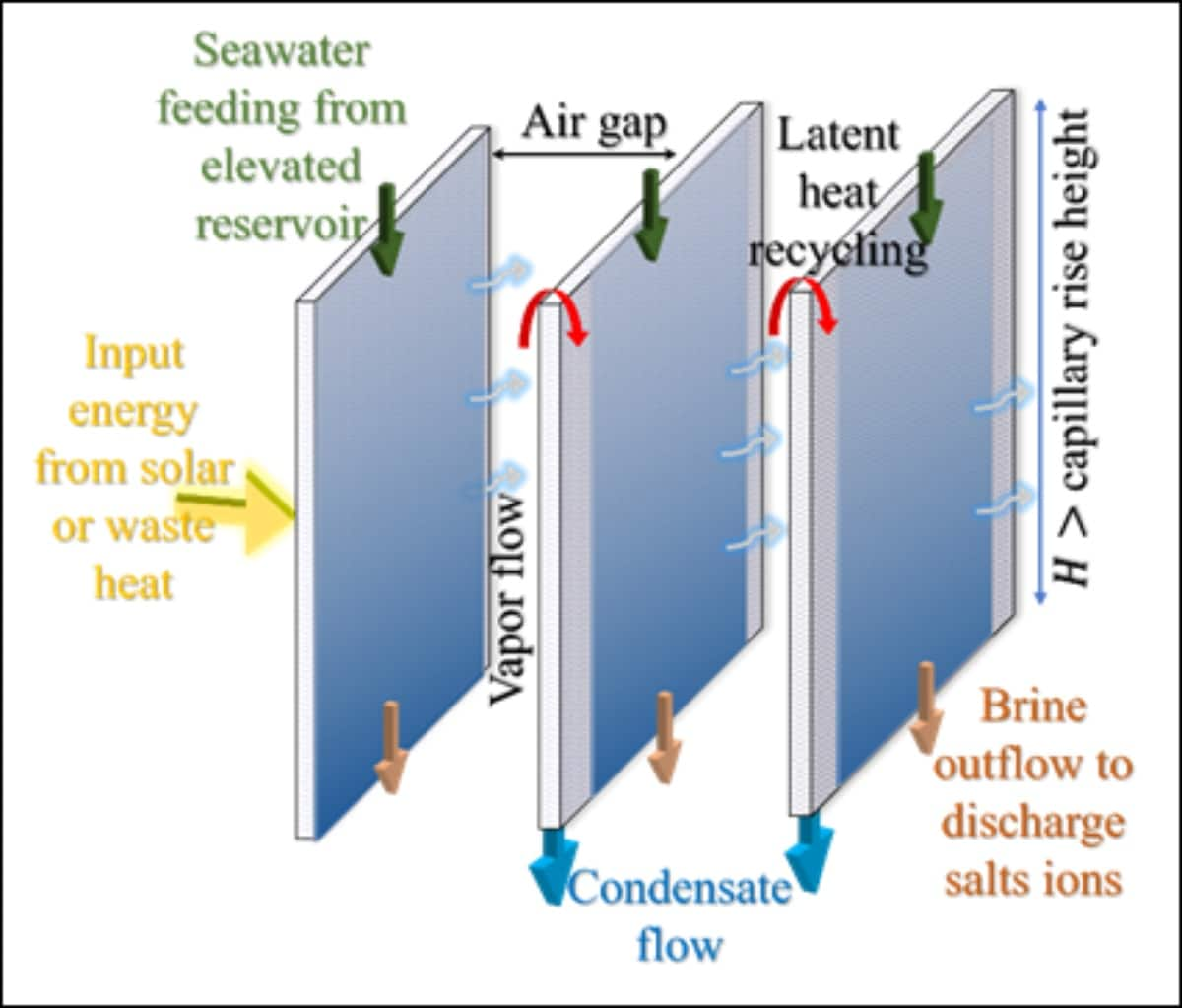Context:
Recently, Researchers at the Indian Institute of Science (IISc) have unveiled a novel siphon‑powered desalination system that could transform how coastal and arid regions access clean drinking water. The design promises higher output, lower cost, and greater reliability compared to typical solar stills and other passive desalination methods.
About siphon‑powered desalination system:
A siphon-powered desalination system is an advanced thermal technology that uses the principle of siphonage to convert saltwater into fresh, potable water. Developed by the Indian Institute of Science (IISc), it is designed to be more efficient, cost-effective, and scalable than traditional solar stills by eliminating issues like salt buildup.
How the system works?
-
- Siphon‐powered thermal process: The system uses gravity (via a siphon) to draw in saline water, which spreads as a very thin film over a heated metal surface to encourage rapid evaporation.
- Thin film evaporation + ultra‑narrow condensation gap: Vapor produced from the heated film travels a tiny distance (about 2 mm) to a cooler surface where condensation happens, turning vapor back into freshwater.
- Multistage setup for recycling heat: Evaporator‑condenser pairs are stacked in stages so that heat from earlier stages is reused downstream, improving efficienc
- Siphon‐powered thermal process: The system uses gravity (via a siphon) to draw in saline water, which spreads as a very thin film over a heated metal surface to encourage rapid evaporation.
Key features and advantages:
· High efficiency: Produces over six liters of clean water per square meter per hour under sunlight, a significantly higher rate than conventional solar stills.
· Scalable and sustainable: The modular design allows for easy scaling, and the use of low-cost materials like aluminum and fabric makes it affordable.
· Energy versatile: The unit can operate using solar power or waste heat, making it suitable for off-grid communities, coastal regions, and disaster zones.
· Salt resistance: It can handle extremely high salt concentrations—up to 20%—without clogging, making it effective for treating hypersaline water and managing brine.
· Environmental impact: By relying on passive thermal energy sources, the system offers a sustainable and low-carbon solution for producing fresh drinking water.
Implications:
If successful at scale, this technology could make a real difference:
-
- Boost access to potable water in remote / coastal and resource‑poor areas.
- Reduce dependence on expensive, electricity‑intensive reverse osmosis systems.
- Help communities in arid regions, islands, or disaster areas where water infrastructure is limited.
- Offer a greener alternative, using passive or low‑energy systems, thus reducing carbon footprint.
- Boost access to potable water in remote / coastal and resource‑poor areas.
Conclusion:
The new siphon-powered desalination system developed by IISc researchers offers a promising solution to the global water crisis. By providing a low-cost, efficient, and sustainable way to purify seawater, this technology could help secure safe drinking water for millions of people in water-stressed regions. With its potential to transform seawater into a dependable source of fresh water, this innovation marks an important step towards a thirst-free future.







